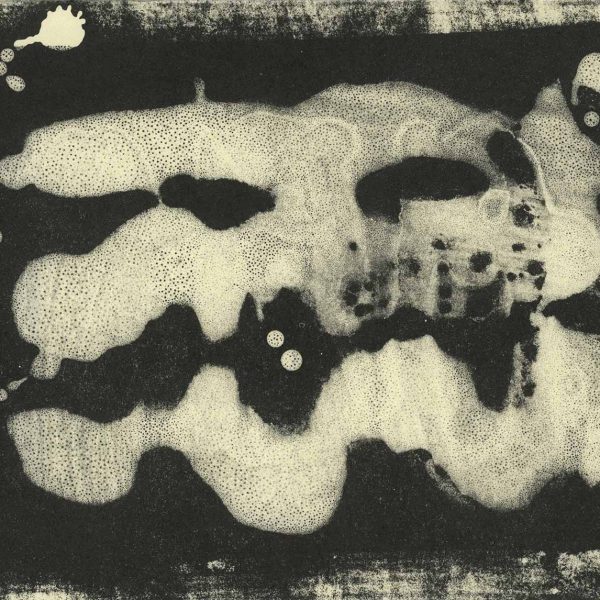Gum and acid wash
Materials:
- Gum arabic
- Nitric acid
- Turpentine
- Asphaltum
- Shellac
- Rosin and talcum

The characteristic dotted pattern is similar to reptile skin. Soft, organic forms with tiny black dots can constitute an interesting graphical matter.
The best effects appear on a previously prepared black background or images dark enough to show the contrast.
Make sure to prepare the background before pouring the wash. The edges of the lithographic stone should be covered with gum arabic, and when it dries, covered with asphalt (without shellac). Wait (5-15 minutes) for the turpentine to evaporate.
The stone has to be washed out with water and inked with printing ink. Note, not with feather ink but lighter, e.g. black (or other) offset ink. However, it should be shortened by addition of magnesium. It should not be feather black, because it will be harder to etch through it.
When the surface is evenly covered with ink you can gently dust it with talc (for greater control over the etching substance) but this is not necessary.
Mix 30ml of gum arabic with at least 30 drops of nitric acid. After the test, a violent reaction should appear on the edge of the stone – the acid should foam. Now the strong solution can be applied to the image. The thicker the layer the more acid, and thus, the brighter traces will appear.
The acid should create a grid of bubbles on the surface – characteristic black dots. So if we care about these dots it is better not to move the gas bubbles.
After a while the substance will stop foaming. After about a quarter hour, the surface of the stone can be thoroughly washed with water the effect will remain visible. If it is not satisfactory, you can apply another layer of wash.
After thoroughly washing the acid with water, it is necessary to wash out the drawing and change the offset ink on which the etching was done. For this purpose you need to pour water and turpentine on the stone. This mixture will help remove the paint thoroughly while maintaining the hydration of the surface of the stone. It is needed because immediately after washing the offset ink off, the stone should be rolled up with feather ink Drying the image and dust it with rosin and talc. The second etching should be applied. As usual – it depends on the intended effect.


